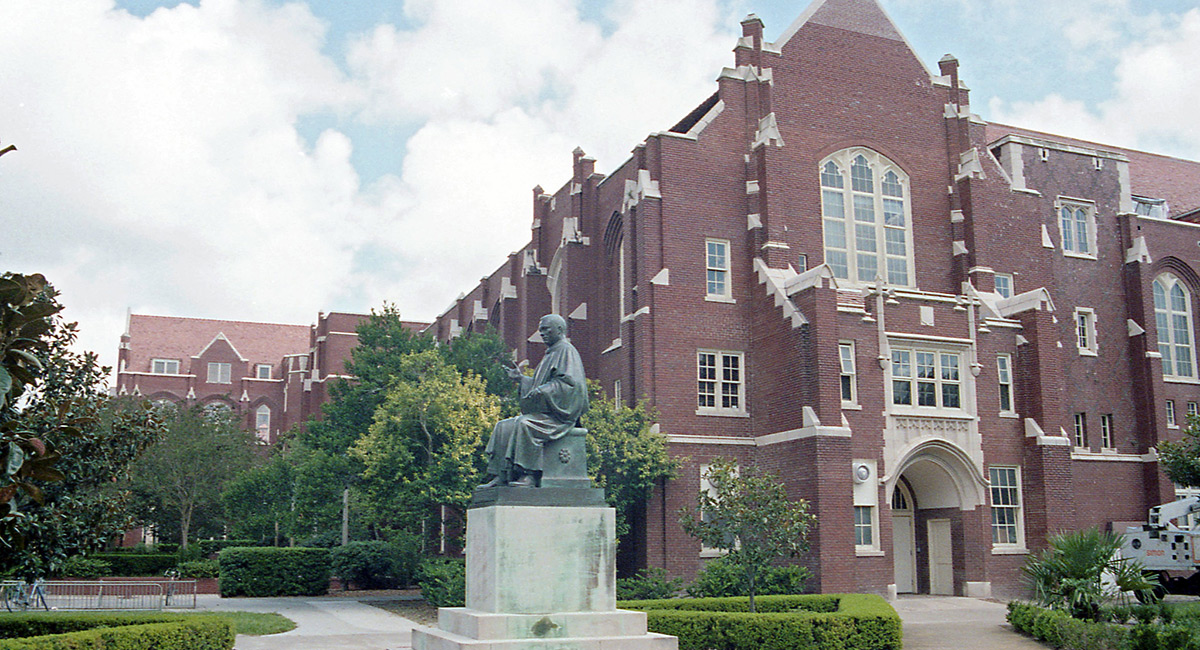In the first decade of in this century, three of the nation’s colllege football powerhouses came from Florida: the University of Florida, Florida State University (FSU), and the private University of Miami. By contrast, the 2021 football superstars are far less Floridan—these three schools have all lost at least five games and are not even near being ranked in the top 30 schools. In the year 2000, however, all three schools were in the nation’s top 10 in the final AP rankings.
Revenge of the nerds? Florida has developed an academic reputation for having a couple of truly top-flight state universities, the University of Florida and Florida State (FSU). The latest U.S. News rankings has Florida (UF) tied for fifth among public universities, just below longtime leaders Cal Berkeley, UCLA, Michigan, and Virginia, and tied with the University of North Carolina. And FSU has risen impressively too. Looking at all (not just public) universities, it rose a dramatic 41 ranks from 96 to 55 in just six years. and is the top 20 among public schools. Similarly, in the methodologically rather different Forbes rankings, UF also ranks sixth among public universities and breaks into the top 25 if private institutions are included, and FSU has also moved up impressively (although less in the Wall Street Journal rankings with a different methodology).
As population and state wealth grow rapidly, states see their flagship schools grow in reputation, but Florida is now far outdistancing its major Sun Belt rival, even larger and richer Texas, which is getting huge in-migration of high tech companies. The University of Texas at Austin tied for 10th in the US News public national university rankings, the only Lone Star State public school in the top 25, and was only the 15th highest ranking public school according to Forbes. And unlike Florida, Texas has a huge oil-based endowment.
Long-time UF president Bernie Machen, now retired, tells how his governing board directed him a decade or so ago to rise from 19th in the US News national university rankings to the top 10. He accepted that as a challenge, and acknowledges that then Governor Rick Scott was a big supporter by advocating giving extra money to schools achieving academic excellence (and higher rankings). Under Machen’s 2015 successor, W. Kent Fuchs, the top 10 goal was not only reached but meaningfully exceeded. Similarly, Scott’s gubernatorial successor, Ron DeSantis, seems, rhetorically at least, to support the performance-based funding model that helps finance the Florida Gators and FSU Seminoles success in the classrooms and laboratories but not on the playing field.
Universities face trade-offs, and have to manage competing and often contradictory goals. The aspiration of providing a college education to all high school graduates can conflict with the goal of having renowned public universities. In the two decades between 1998 and 2018, both the UF and FSU added about 10,000 students, showing steady but very conservative growth—less than the overall population increase. Meanwhile, however, Central Florida University (CFU) added over 38,000 (!!) students and Florida International University (FIU) expanded by over 27,000. UF and FSU became much more selective in the students they admitted, while CFU and FIU promoted high levels of access, necessarily adopting lower academic standards. Some schools promoted accessibility and enrollment growth, while other hyped higher standards and improved reputation. The Floridian high school graduate has all sorts of choices (including several schools not mentioned above).
Reputational improvement at UF and FSU has brought gains to students as well. The salaries of graduates of UF and FSU are typically 15% or more higher, for example, than at CFU or FIU. Employers wanting the best and brightest of Florida’s public university students will pay a premium to get UF or FSU graduates.
Looking nationally, the birth dearth and other factors suggest national enrollment growth in the coming decade may be somewhere between non-existent and modest. Not every school can succeed in becoming “the best.” The Florida experience of recent decades may not be replicated nationally when many states are starting to actually lose population. But the quality vs. quantity trade-off still exists and will be a factor in higher education in the coming decade and beyond













